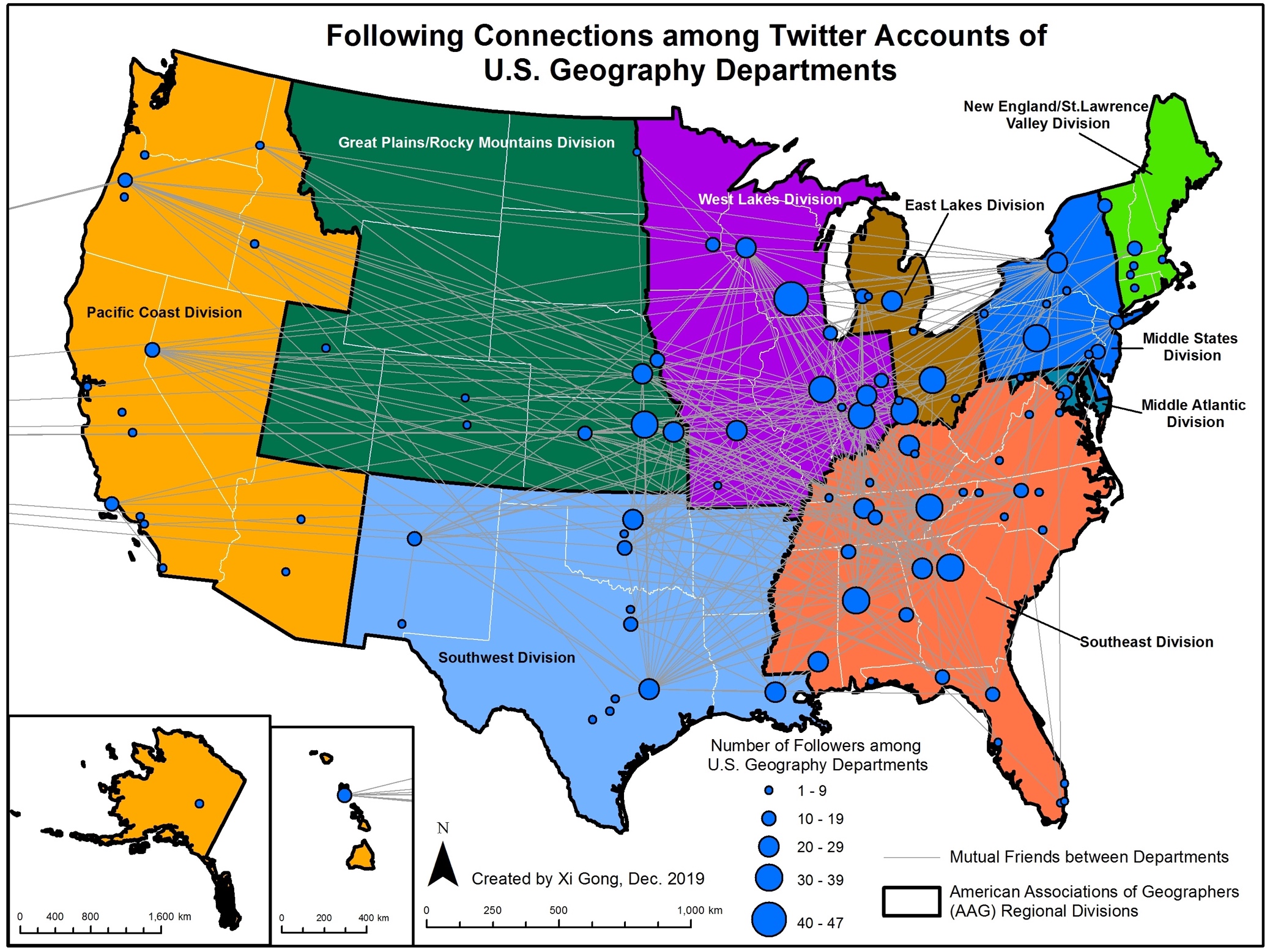Map of the Month
November/December 2019

Institutional Twitter Usage among U.S. Geography Departments
Twitter provides short messaging updates for fast dissemination along with retweeting and directed-following functionalities for user interaction, which makes it a popular tool for institutional outreach activities. Dr. Xi Gong and Dr. Maria Lane analyzed U.S. geography departmental Twitter accounts and tweet histories through spatial-temporal analysis, frequency analysis, text mining, and network analysis. This is the first study investigating the institutional Twitter usage of U.S. geographers at the departmental instead of university/college level.
This map shows the following connections among U.S. geography departments as of March 31, 2018. If department A follows department B, department A becomes department B’s follower. In this map, each circle represents a geography department and the circle size represents the number of peer institution followers of the department (range: 1 to 47, mean: 11.8). The number of a department’s peer institution followers can indicate, to a certain degree, the department’s impact in the geography community. Two departments are mutual friends on Twitter if they follow each other. The mutual friend relationship represents a bidirectional connection between departments. A line connecting two circles means a mutual friend relationship exists between the two departments represented by the circles.
Although the tweeting frequencies, numbers of friends/followers/mutual friends, as well as percentages of retweets and tweets with at-mentions or hashtags varied among departmental Twitter accounts, the account quantities, temporal tweeting patterns, and connection patterns among departments were generally reasonable. Based on these patterns and the four criteria suggested in the literature (listening, feedback, community, and connection), Dr. Gong and Dr. Lane hope the following suggestions for Twitter usage will contribute to outreach activities in geography departments and ultimately improve the social media community of geography as a discipline:
- Tweet more frequently, even during weekends and winter/summer breaks
- Actively discover target audiences (current/prospective students, alumni, employees, etc.), follow them, and listen to their updates consistently
- Use at-mentions more frequently in tweets to interact with other accounts, especially professional organizations (e.g. the American Associations of Geographers (AAG)), geography departments, university programs, and active Twitter users
- Tweet with suggested hashtags, including popular geographical research topics, popular events, organizations, and conference hashtags
- Include community buzzwords when drafting tweets
- Search, like, and retweet popular topics in the community
- Follow and become mutual friends with more peer institutions from all of the AAG regional divisions and Carnegie classifications
- Consider hiring/designating a social media coordinator to manage departmental accounts and implement all these suggestions more consistently and strategically.
More details about this research can be found in the following publication:
Gong, X., Lane, K.M.D. 2019. Institutional Twitter Usage among U.S. Geography Departments. The Professional Geographer. https://doi.org/10.1080/00330124.2019.1653770

